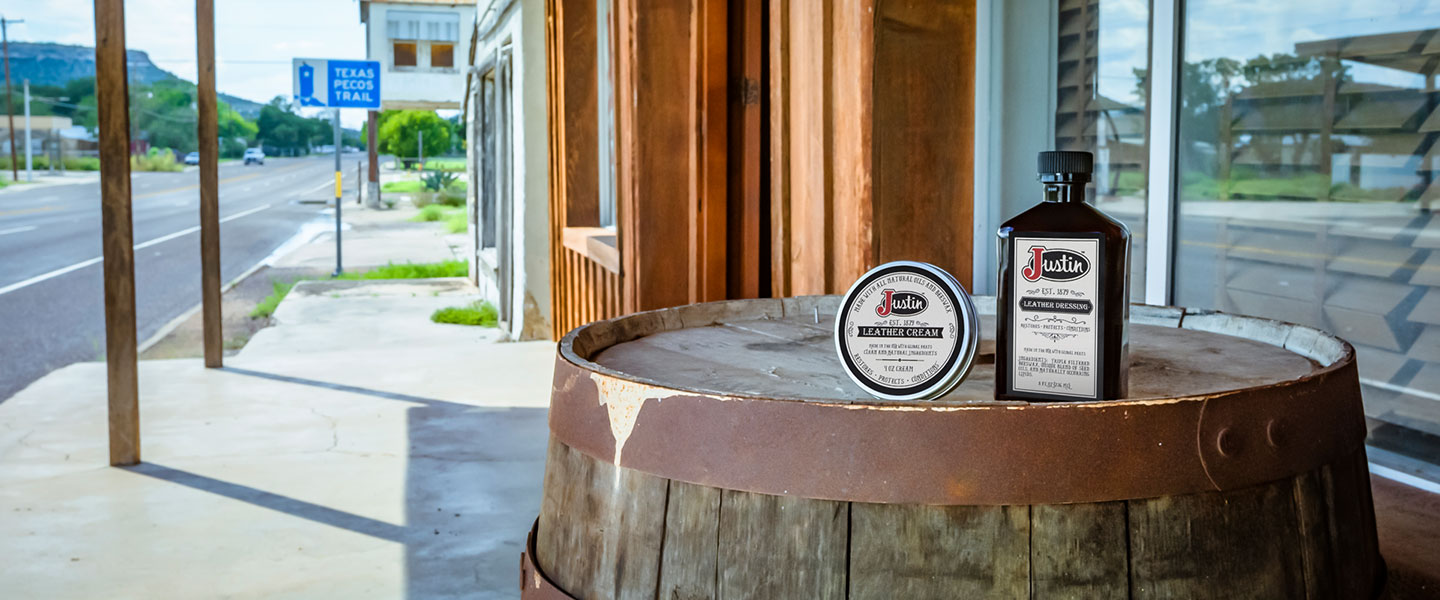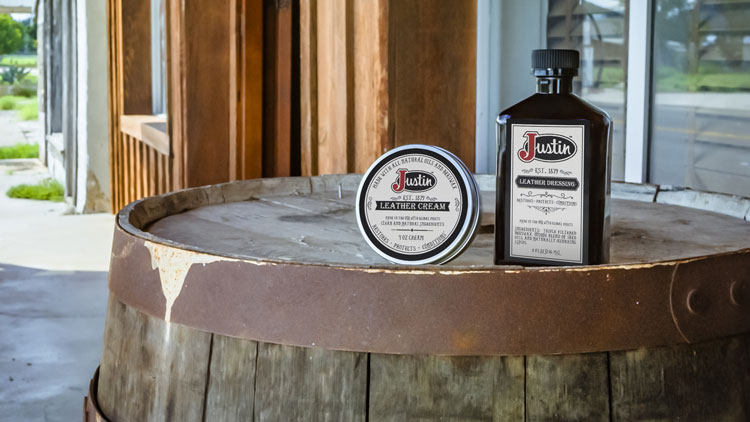Leather boot care
Proper leather care not only makes your boots look good, it preserves and adds life to the natural materials on your boots. Without proper conditioning and care, leather will begin to dry out and eventually start to crack. To maintain the quality and appearance of your boots, it is important to keep them clean, conditioned and polished. “Weather proofing” will also add to the life of the leather. If cared for and treated properly, you can easily extend the lifetime of your cowboy boots.
Here is a list of items you will need to proper boot care:
- Soft cotton cloth
- Soft shoe brush
- Smooth leather cleaner and conditioner
- Boot cream and/or polish
- Water proofing agent
Additionally, we suggest keeping cedar boot trees inside your boots when in storage. This will help absorb moisture and bacteria from the linings.
Cleaning your boots
To get started, we recommend you chose an area that is well ventilated as some leather care products can release toxic fumes while working with them.
First, remove any loose dirt from your boots with a soft bristle brush, especially from any wrinkles and crevices. Then, using a slightly wet cloth spread saddle soap or leather cleaner onto the leather and rub to remove stains. After scrubbing with saddle soap or leather cleaner, be sure to “rinse” off all soap with a wet cotton cloth. Do not let the saddle soap or cleaner dry on the leather. Once saddle soap or cleaner is removed, let boots completely dry before applying conditioner or polish.
Condition and polish your boots
Next, condition your boots by rubbing small amounts of conditioner into the leather until the entire boot is covered. Wait about 15 minutes for the leather to absorb the conditioner and then wipe dry to remove any excess conditioner.
Then polish your boots using a paste polish or a cream. While paste polish lasts longer, it’s a little more messy, harder to apply and does not offer as many colors as creams, which are easier to apply and less messy. Our product designers suggest opting for the cream polish.
After selecting the correct color of polish, we suggest you test the color on the boots by applying a small amount to an inconspicuous area of the leather to see the results. After the polish dries, brush with a soft bristle show brush and then rub briskly with a soft, dry cotton cloth.
This procedure applies to most leathers except for suede and nubuck.
Additionally, you may want to apply a weather proofing agent to protect your boots from water, snow and mud. A protective spray works well for smooth and exotic leathers, while beeswax would be a better option for work boots.
When it comes to suede and nubuck brush you will want to first use a soft bristle brush to remove dirt and debris, then wipe with a slightly wet cotton cloth to remove stains. After boots are dry, spray them with a weather protectant.
Test your boot care treatment and products
It is always best to test a small, less visible area of the leather with your boot care product and cleaning treatment prior to applying care to the entire boot as some leather cleaners and care products may alter the color of the leather.
For example, if you are cleaning a pair of work boots you don’t need to be as delicate with your treatment and boot cream as if you are cleaning a pair of exotic dress boots that have more delicate leather.
Regular boot care
Dirt and grime have an abrasive effect on leather. We recommend brushing off your boots after every 3 to 5 wears. The following is a list of leather types and the best way to care for them.
Cowhide
When it comes to caring for cowhide leather, one of the first things you need to determine is if the boot is waterproof. Waterproof boots tend to be made with extra durable leather and have features built into them that makes them more resilient and easier to clean.
Cowhide on a western boot - Non-Waterproof
1. Use a soft scrub brush dipped in mildly soapy water to softly scrub off remaining debris and dirt.
2. Rinse the boots with warm water and let thoroughly dry for up to 24 hours.
3. Liberally apply a leather conditioning cream to all exterior leather areas on the boot.
Work Boots – Waterproof
1. If the boot has laces, remove the laces.
2. Rinse or hose down only the exterior of the boots to remove debris.
3. Use a soft scrub brush dipped in mildly soapy water to softly scrub off remaining debris and dirt.
4. Rinse the exterior of the boots with warm water and let thoroughly dry for up to 24 hours.
5. Liberally apply leather conditioning cream to all exterior leather areas on the boot.
Suede
With suede it is very easy to change the color of the boot when cleaning and applying water. This means it’s very important to use warm, clean water with no soaps or agents. And even when applying water it could still change the color of the suede.
1. Let the debris dry on the boots.
2. Carefully use a semi-stiff brush to knock off debris from the boot.
3. Dust off the remaining debris.
4. Use a warm wash cloth to dab off and clean the boot.
Exotics
This leather should be treated using the gentlest cleaning and conditioning methods of all leathers. Exotic leathers require a more delicate and thorough technique than your typically leather. To extend the life of the premium exotic leathers on your boots, it is important to keep your boots cleaned, hydrated and moisturized with a quality treatments, conditioners and oils.
The type of exotic leather you are treating will determine proper boot care:
Ostrich Leather
Use a soft, damp wash cloth to softly wipe down exotic leather. Then lightly apply a thin layer of exotic leather conditioner after cleaning. Ostrich leather can be extremely sensitive to oils – make sure you apply conditioner to a small area first prior to applying to the entire boots.
Reptile Leather
Use a soft brush to gently wipe down the exotic leather. Once clean, liberally apply an exotic leather cream.
Fish Leather
Gently brush the surface of your boot removing dirt and debris. Then lightly apply an exotic leather conditioner to your boot.
Shark Leather
One of the most durable leathers available on a boot, you will first want to spot clean this shark leather with a damp cloth. For stains, use a cleaner specifically designed for exotic leathers or a mild soap mixture to carefully remove the imperfection. Once cleaned, liberally apply an exotic conditioner.
Stingray Leather
To clean, use a soft, barely dampened cloth to gently wipe off the stingray leather. Then delicately apply a premium exotic leather conditioner after thoroughly cleaned.
Elephant Leather
Use a soft brush or towel to remove dust, dirt and debris.

